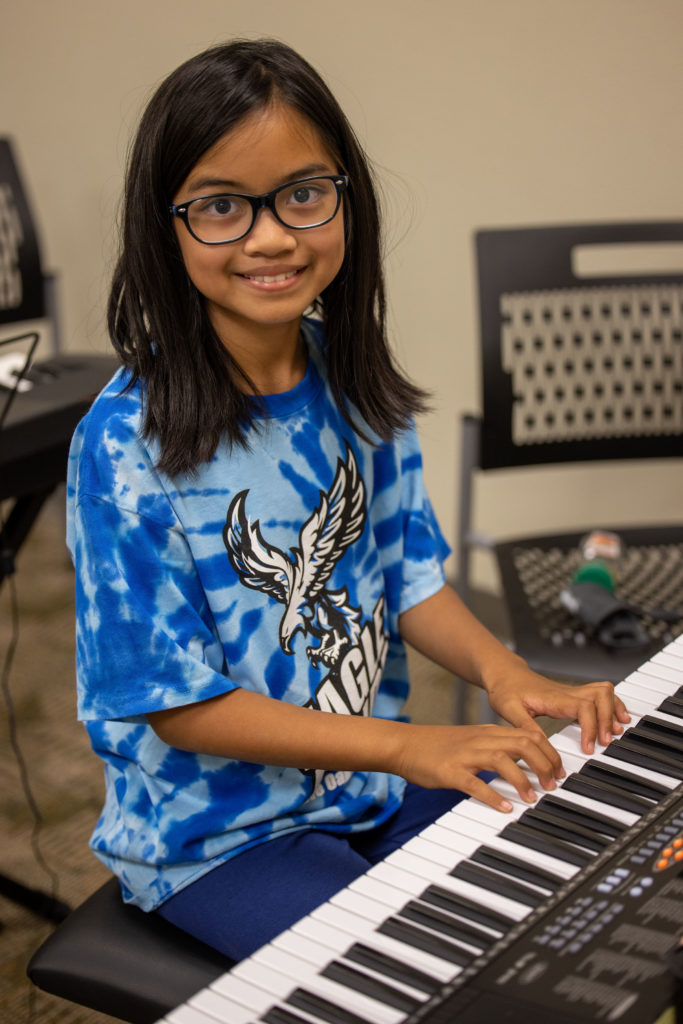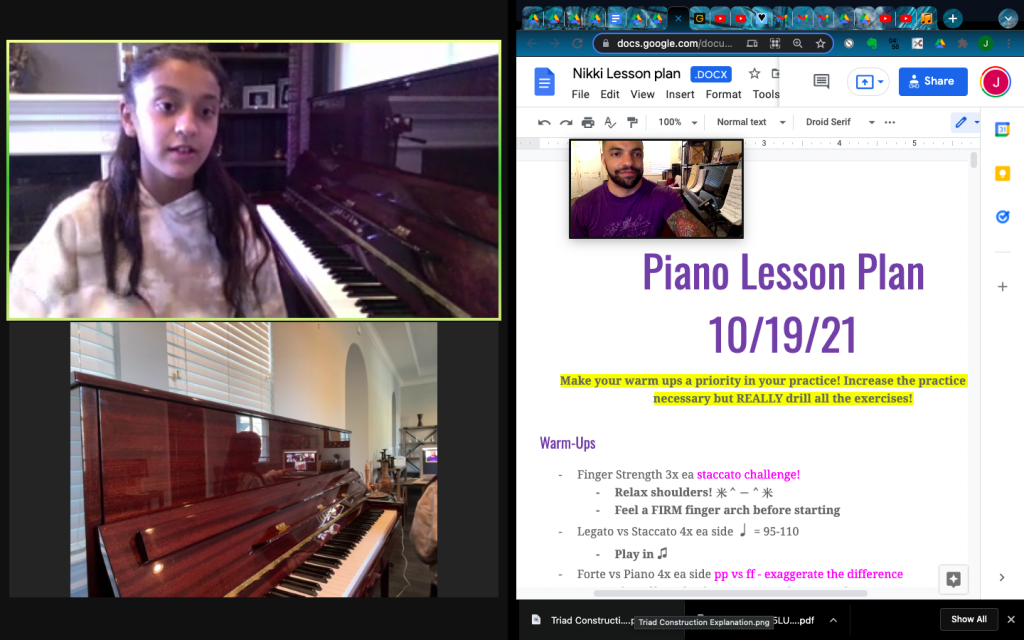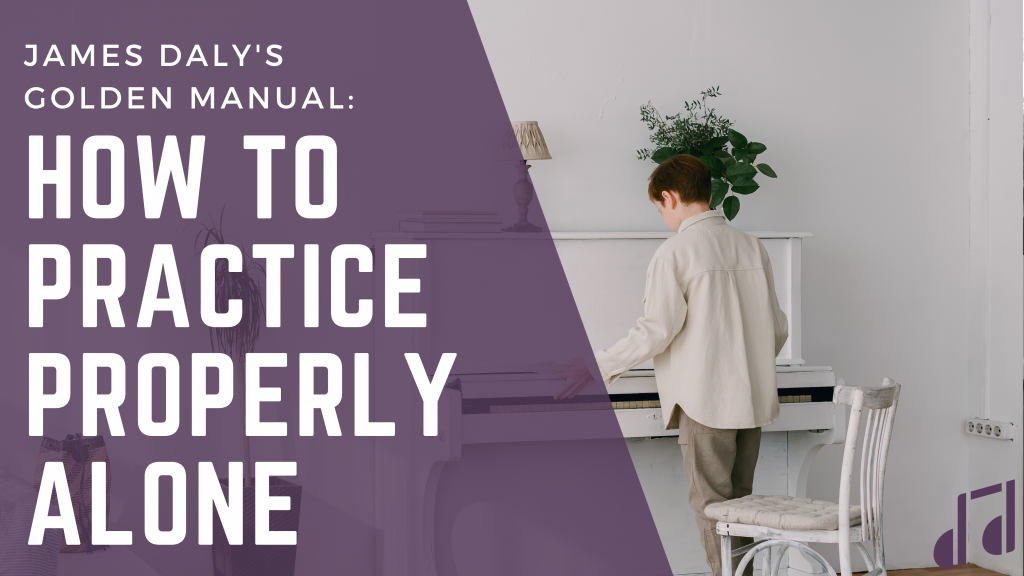We all know that practicing is a crucial part of music education. No matter how talented you are, that is only 10% of the process. Because of that, regular practice is the key to success!
But, many students have encountered a situation where they have put lots of effort into practicing – they have practiced each day for a long time – but, in the end, the results were missing. That is a common mistake that happens when the students aren’t informed about proper ways of practicing. To know if your child is making the same mistake, here are a few examples of bad practicing: playing the song only from the beginning until the end, practicing only in a fast tempo, moving forward without correcting or practicing mistakes, and so on. The list is enormous, and because of that, James decided to write this month’s blog post about proper and effective ways of practicing individually!
1. Warm-up properly!
If you expect to play your song flawlessly without a warm-up, you must be aware that you might encounter much lower results than they actually are! As we like to call it, your fingers are ‘cold’ – they haven’t gotten used to playing, and your mindset isn’t ready for maximum focus.
That is one of many reasons why we dedicate lots of time to technical exercises – besides that, they improve your technical abilities, they are the best way to warm up for your songs properly! Because of their pattern-based structure, they are the best way to prepare our brains and our fingers for quality exercise. So, keep in mind: scales, arpeggios, chords, or even Hanan always come before anything!
2. Song Review: 1 run through!
When you have chosen which song you are going to practice, the best way to see what needs to be practiced and in which way is by playing the song from the beginning until the end. That playing will give you the full report on which parts are mastered, which need more attention, and how to address those issues adequately.
Important notice: even if you are aware of all the errors and are convinced that they were an accident, don’t play the whole song again to prove to yourself that you can do it better! It will only worsen because you will be frustrated and not focused on resolving the issues! You will get used to the mistakes, and then it will be much harder to correct them! Be patient, take only those difficult parts, and practice them until they become flawless like the other good parts! Then, your brain will not be overwhelmed but smart in achieving the best results in a much shorter time!
3. Learning a new song
When encountering new notes, our brain has lots of information to receive and project – reading the notes, understanding them, and playing them properly! So, a strategic approach is a must for our brain to achieve as much information as possible in the shortest time possible.
Before we get the most effective way, here is the most common bad example that many students use: learning a new song by playing it from the beginning until the end is just like learning, for example, history by reading the whole book from the beginning until the end.
We always advise the students to ‘break’ the song into smaller segments because it is much easier for the brain to learn smaller parts. We also compare this way of practicing to Puzzles – when you know what each puzzle looks like, then it is very easy to put them in the right place! So, practice measure by measure, row by row, and part by part before you try the whole song! For example, take one segment and repeat it until you get a sense of which notes you need to play and where the hands must move to play the proper notes! That will sometimes take 3 playings and sometimes 33, but it will surely have effective results that you will notice even tomorrow!
Also, when learning a new song, feel free to learn how to play hands separately! It can be challenging to keep track of new notes of both hands and even play them properly! The puzzle method is also very recommendable here!
4. Are you having hiccups (stops) while playing?
If you notice that you are not able to play the song fluently without any stops, that tells us that your brain still hasn’t processed all information properly. That means you haven’t mastered all parts. Achieving fluency has a few practicing methods, which repeating from the beginning until the end isn’t the one!
First, conclude where that ‘hiccup’ constantly appears. Then, take a smaller part where that hiccup is in the middle. By repeating that small part, your brain only focuses on that particular spot and gets used to the proper way of playing. After that, take a larger part where that hiccup is placed and repeat it until it becomes comfortable to play everything fluently.
The second way of achieving fluency is by practicing the song very slowly, and by that, we mean slow motion slowly. Even if it doesn’t make sense at first glance, let us give describe you metaphorically: when you learn how the legs work while walking, then it is very easy to learn how to run! Likewise, if you can play the song very slowly with a thorough finger movement and without any stops, it will be very easy to increase the speed!
5. Adding dynamics!
When your homework task is to practice the dynamics, there we advise you to take time to reflect! And by that, we mean not only to follow the dynamics of the song but also to think about them! What is the core emotion or atmosphere of that song? Do I need a lighter approach, or should I be more energetic while playing? What would be the story for that song? All those questions activate the creative part of the brain that tremendously helps in achieving much more musicality! Don’t hesitate to hear others playing, too – Youtube has all the songs with so many quality performances!
Conclusion
After reading those practicing methods, we can conclude that there isn’t too much philosophy behind proper practicing! Knowing all the practicing methods will take you much less time and give you so many benefits that will motivate you for even great musical challenges! That is why we at San Ramon Academy of Music dedicate much time to creating a detailed lesson report where all goals are easily achieved! Sign up with us, and we will show you how music education can be such a fun and fulfilling journey!
Book your FREE trial lesson with us by clicking the links below!
Individual Lessons: Piano, Guitar, Violin, Singing, Trumpet, Composing!
Group Lessons in San Ramon



